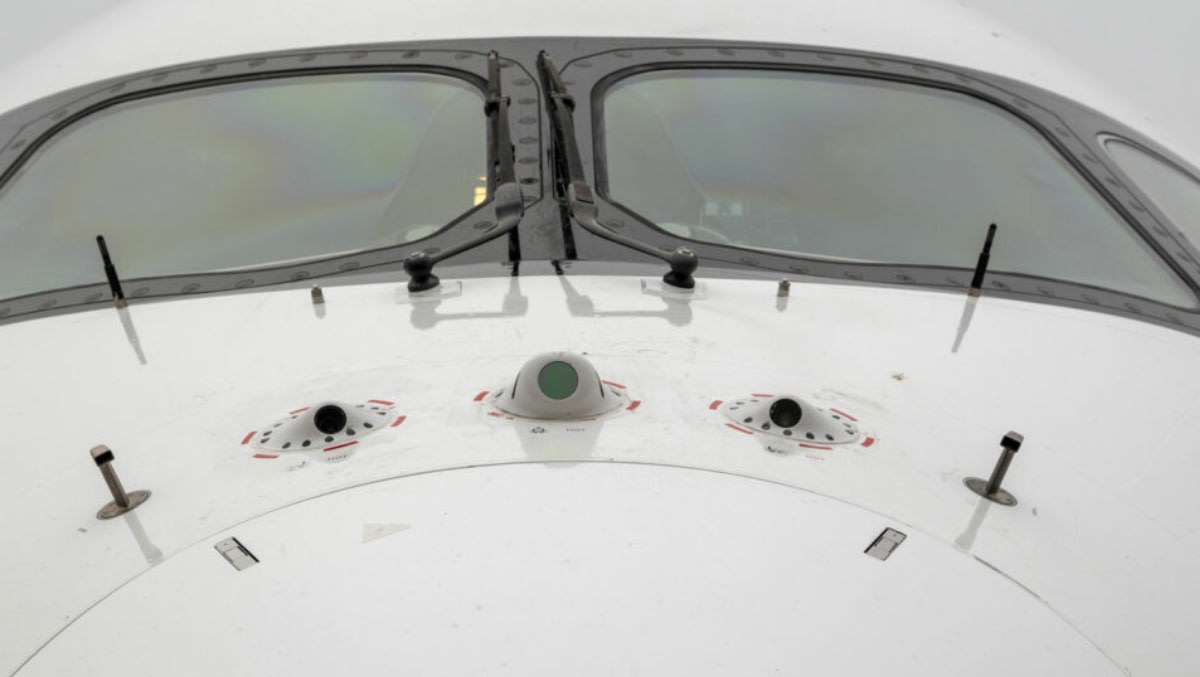
Airbus is currently trialling technology called DragonFly that would allow its aircraft to conduct completely automated landings, as well assisting in flight and taxiing.
The company confirmed that it is currently running tests using an Airbus A350 fitted with cameras, with technology inspired by the way dragonflies navigate through the recognition of environmental landmarks. It is currently being developed by a subsidiary of the aerospace company called Airbus UpNext.
“Inspired by biomimicry, the systems being tested have been designed to identify features in the landscape that enable an aircraft to ‘see’ and safely manoeuvre autonomously within its surroundings, in the same way that dragonflies are known to have the ability to recognize [sic] landmarks,” said Isabelle Lacaze, Airbus UpNext’s head demonstrator.
The implementation of the technology could see aircraft one day be completely automated, or allow for single-pilot cockpits.
Automated landing could remove the need for co-pilots in commercial flights as soon as 2030, according to international aviation regulators and airlines.
The plan — which would allow airlines to cut staffing costs — has seen serious resistance from pilots for obvious reasons.
Responding to DragonFly, The Australian and International Pilots Association (AIPA), a union that mainly represents Qantas pilots, has said that in the event of an emergency, the experience and training of a pilot could not be replaced by automation.
“This reliance that the autopilot is going to be able to save the day is … foolhardy. When things go wrong in an aeroplane, they go wrong really quickly and it frequently takes the combined efforts of two well-trained, well-rested pilots to resolve those situations,” said Tony Lucas, AIPA president.
Lucas believes that automation should be a tool that supports pilots, rather than a replacement, citing recent Qantas malfunctions that eliminated autopilot.
“So you know Airbus can keep dreaming up how an aeroplane can do an emergency diversion but I’m not sure how it does an emergency diversion with no autopilot and no actual pilot.”
However, Airbus has said that testing has shown that DragonFly has been able to adapt and respond in cases of incapacitated crew member situations, as well as assisting flight, landing and taxiing.
“Taking into account external factors such as flight zones, terrain and weather conditions, the aircraft was able to generate a new flight trajectory plan and communicate with both Air Traffic Control and the airline Operations Control Centre,” said the company.
“In the unlikely situation where a crew is unable to control the aircraft, DragonFly can redirect the flight to the nearest appropriate airport and facilitate a safe landing.”
Airbus at this stage maintains that the technology is being developed as a way to assist current crew rather than as a method of replacing them, however history shows that technological developments have reduced the operational staff of commercial aircraft slowly but surely.
Commercial jets in the 1950s required two pilots, a navigator and a flight engineer. The navigator was soon removed, as was the flight engineer from single-aisle jets in the 60s, and wide-body aircraft in the ’80s.
The discussion of single-pilot cockpits has been going for some time now, with airlines arguing that technology has reached a point where co-pilots are no longer necessary, at a time where pilots are in short supply and expensive.
Qantas CEO Alan Joyce has said that the airline is “certainly not pushing” for single-pilot flying due to safety risks, but has not ruled it out.















